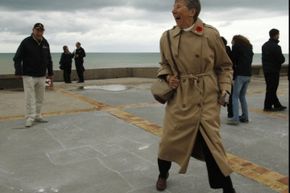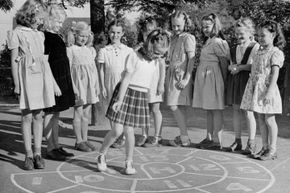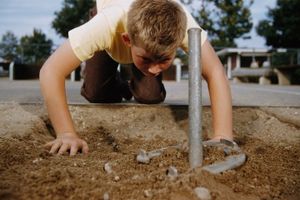While it's most often enjoyed as a childhood game today, its roots may be traced to ancient authority. Hopscotch may have been an agility training exercise soldiers used during the early days of the Roman Empire, although back then they played on courts up to 100 feet (30.5 meters) long [source: StepUp4Change]. There's also some evidence, though, that the game may have origins in China. Regardless of where it began, hopscotch is now a game with global participation.
The object of hopscotch is to hop from point A to point B and back again without hopping on any lines -- the origin of the name comes from hopping "scotch" or hopping lines -- and without losing your balance. But the real object of the game is to be the first to complete every hop. To play a game of hopscotch you'll need markers and you'll need a court. A coin, a small stone or another small solid object (even your keys) make good markers, and many games have been played on a simple chalk-drawn court. Hopscotch is truly a casual game; unlike other backyard games such as horseshoes or bocce there is no hopscotch association or world federation or any sort of ruling party. There are, though, a few basic rules to know.
Advertisement













